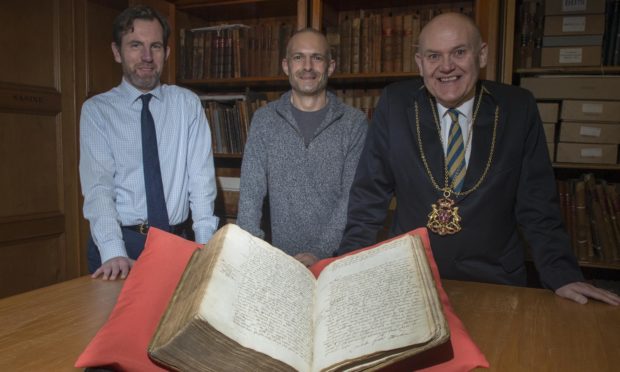The first Scottish ship to sail across the Atlantic set off from Aberdeen more than 420 years ago- a city historian has found in a surprise discovery.
Thomas Brochard, an honorary research fellow at Aberdeen University, was studying the connections between the north-east and the Highlands and began reading a council register from the late 16th century.
He noticed an entry on a vessel named the “William” of Aberdeen which made a voyage to “new fund land” in 1596. This is understood to refer to modern day Newfoundland on Canada’s eastern seaboard.
Until now, the earliest documented Scottish ship to sail the Atlantic was a Dundee vessel named the “Gift of God”, which had sailed from Portugal in 1600.
>> Keep up to date with the latest news with The P&J newsletter
From an earlier reference in the same volume it is known that the “William” had arrived back in Aberdeen in May 1596 from Bordeaux with a cargo of wine, having stopped at Burntisland on route.
The entry in which the ship is mentioned as having crossed the Atlantic relates primarily to debts incurred by Patrick Donaldson younger, a burgess of the town, and burgess William Findlay, the master and skipper of the “William”.
The records reveal that both Patrick and William were involved in the fitting-out and freighting of the vessel between it leaving Aberdeen in July 1596 and its return four years later.
Mr Brochard said: “When I saw the words “new fund land” I knew I had found gold – it was totally by chance.
“It was pretty exciting but I had to check with other archivists that this really was the first reference.
“I’m sure other gems like this are waiting to be discovered in the burg records which are an incredibly rich resource for historians and fully deserve their UNESCO designation as nationally important documentary heritage.”
Phil Astley, a city archivist, said: “Quirky and unusual stories quite often come to light when reading through original records – it’s part of the fun of working in an archive, however, it’s rare to have a find as historically significant as that made by Thomas. It is even more remarkable that we know the names of several crew members.”
Lord Provost Barney Crockett added that the city’s archives were “unparalleled” in Scotland.










